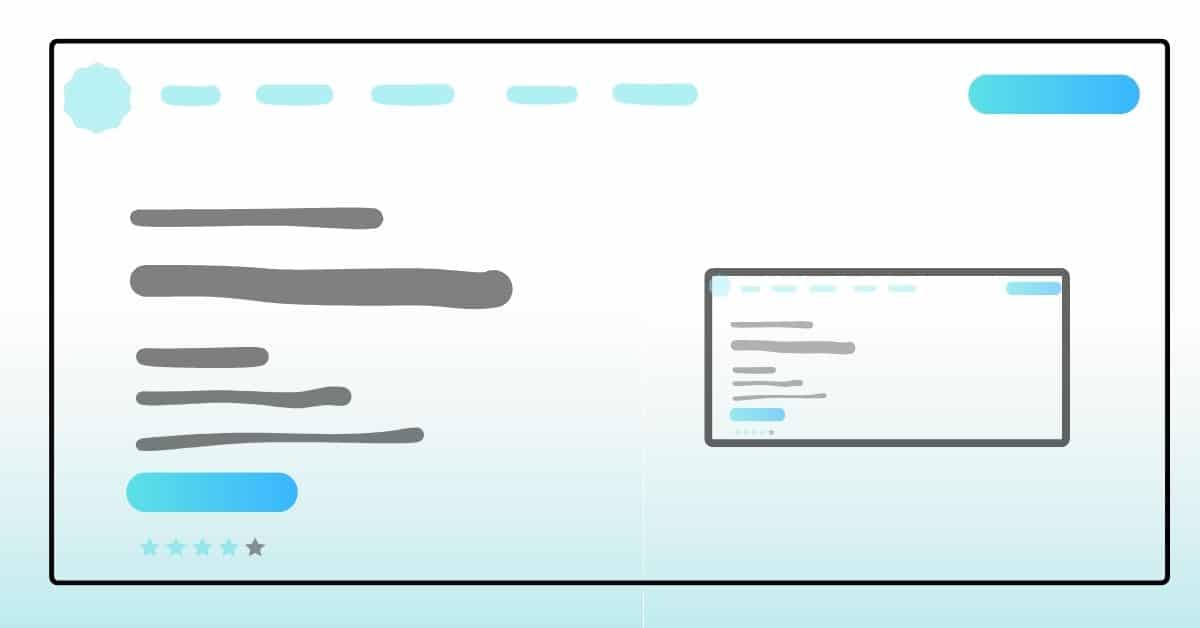In the early stages of your SaaS journey, every single user counts. Since marketing isn’t your forte, and you don’t want to spend hours getting more and more website visitors, you need to make the most out of each interaction. Optimizing your SaaS website design for more conversions is the best way to do that.
If you’ve been searching for advice for a while, you’ll know that it helps to have a big and bright call to action button. That tip has been well-covered by now. But you’re here because you’re still hungry for more. Good. In the next few minutes, you’ll learn how to create a SaaS website optimized for engagement and conversions. Hold on tight.
- Conduct market research
- Plan the website structure
- Design the User Interface
- Write clear and persuasive copy
- Develop your SaaS website
- Optimize your SaaS website design for conversions
- Implement analytics and conversion tracking
#1 Conduct market research
Before you start building your SaaS website, it’s good to know what else is out there. On the one hand, you want your website to look familiar to people looking for a solution like yours. On the other hand, you want your website to stand out.
The best way to do that is by finding gaps and opportunities. It allows you to do better than the rest and find a unique selling proposition. Find the exact problems your audience needs to solve so you can highlight them on your website.
#2 Plan the website structure
Planning your SaaS website is essential to guarantee a clear structure and provide a user-friendly experience with intuitive navigation.
Your market research will help determine the pages you need on your website. The next step is to put them in a hierarchical structure that makes sense to your users without overwhelming them. Ideally, you don’t want more than six options in your navigational menu. You also don’t want pages that are more than three levels deep.
Creating a sitemap gives you a visual idea of what your website structure will look like. When In doubt about how to organize your pages, follow this strategy: Write all the names of the pages on a small piece of paper and ask people to organize them manually.
#3 Design the user interface
With the structure in place, it’s time to start designing your SaaS website. Create a wireframe first to visualize the layout, structure, and flow. An additional benefit of a wireframe is that your copywriter can get started while the website design is still in development.
A good SaaS design is both simple and unique. Prioritize your SaaS product’s most essential features and benefits. Use visual elements like screenshots, videos, or animations to showcase the software in action. And pay attention to details like color schemes, typography, spacing, contrast, and consistency to create a pleasing website design. Try Saaspo and The Copy Galaxy for inspiration.
#4 Write clear and persuasive copy
While the designer takes care of your website’s appearance, your copywriter can start with your website texts. The copy should complement the design to highlight your SaaS solution’s benefits and features. Ensure it communicates your value proposition and unique selling proposition in simple and convincing terms.
Keep your sentences and paragraphs short but say everything you need to say. Adding another section is better than making your paragraphs too long.
#5 Develop your SaaS website
Depending on your technical expertise, you can build the website using a content management system (CMS) or a custom development approach. WordPress and Elementor Pro are an excellent combination for SaaS websites because they allow for detailed design edits while keeping it easy to upload new content regularly. Clio Website’s free SaaS theme can help you get started.
Don’t forget that your business might scale quickly after implementing a conversion-focused design. So make sure your backend infrastructure supports the scalability, security, and performance requirements of your SaaS offering.
#6 Optimize your SaaS website design for conversions
Your SaaS website’s almost ready to be published. Now is a great time to review your design and copy.
Follow this checklist to optimize it for conversions:
- Your website has lots of social proof: case studies, client logos, testimonials …
- Your website inspires trust and security: payment badges, reviews …
- Your calls to action are clear and convincing
- Your website is mobile-friendly
- Your website copy handles objections about pricing, payment terms, trials …
#7 Implement analytics and conversion tracking
You should integrate web analytics tools to ensure your SaaS website performs well and find opportunities to improve conversions. Google Analytics 4, for example, collects website data to understand your customer journey better. With conversion tracking, you can measure key metrics, such as sign-ups, purchases, or trial registrations. Combined with A/B testing or split testing software, you can determine which changes increase your conversions.
Heatmap software such as CrazyEgg and Hotjar can also help you understand how your website visitors interact with your design. This data will tell if you did well in steps 3 and 4: creating your SaaS website structure and designing the UI.
SaaS website design best practices – Conclusion
Designing an attractive and high-converting SaaS website requires a thoughtful approach that combines user-centric design, persuasive copy, and logical flows.
By following this step-by-step approach and implementing these design best practices, you can create a SaaS website that attracts visitors, engages them and converts them into loyal customers.
Finally, remember to continually test, iterate, and optimize your design and copy to keep scaling your business.
Why Clio
We hope that you enjoyed reading about these SaaS website design best practices. Our recommendations and techniques are based on years of experience helping businesses like yours.
At Clio, we have helped many clients grow their businesses with websites tuned for engagement and conversions.
Contact us if you would like us to help you create a unique SaaS WordPress website that engages visitors and convinces them to buy.



